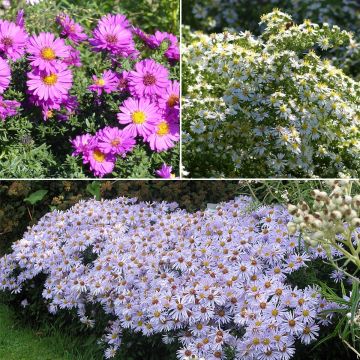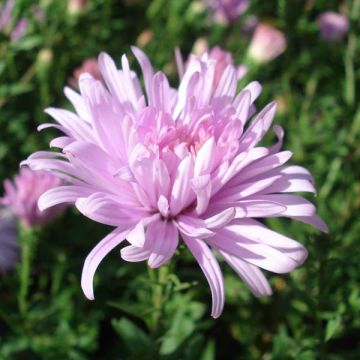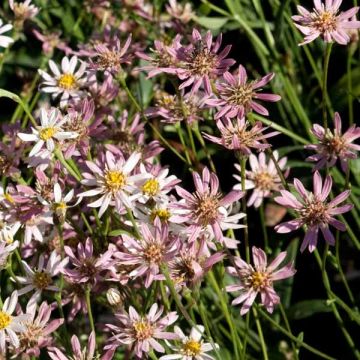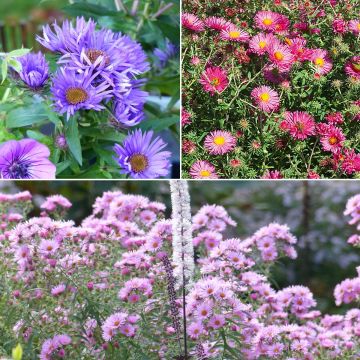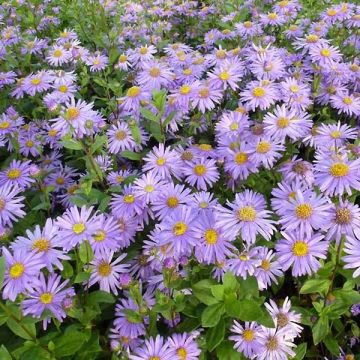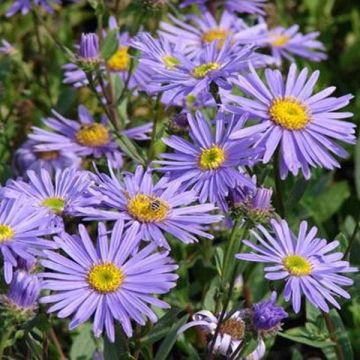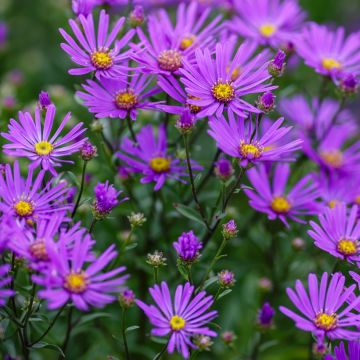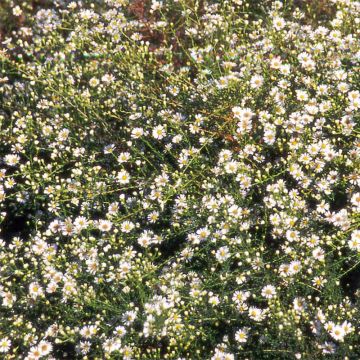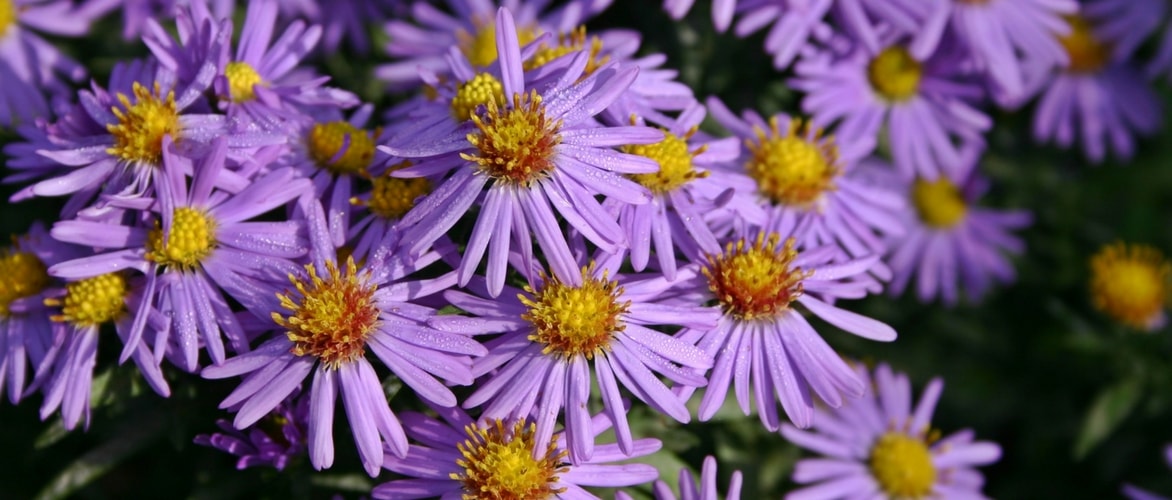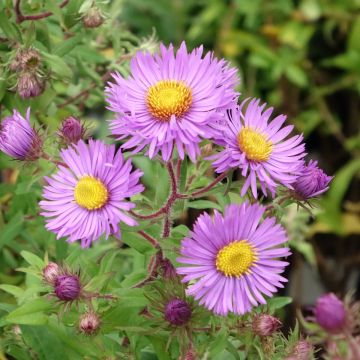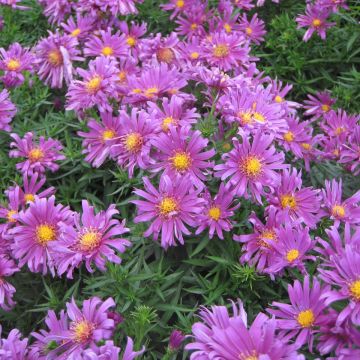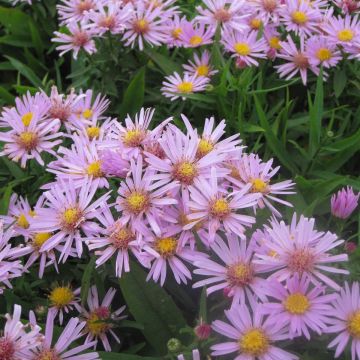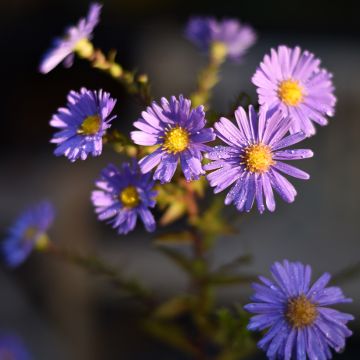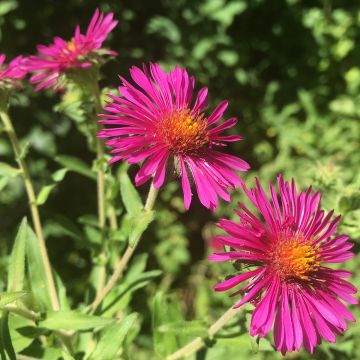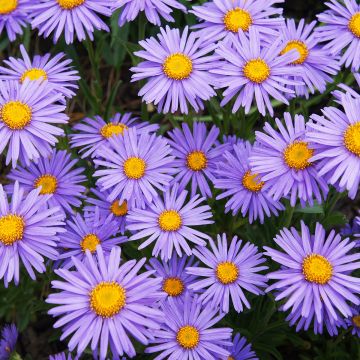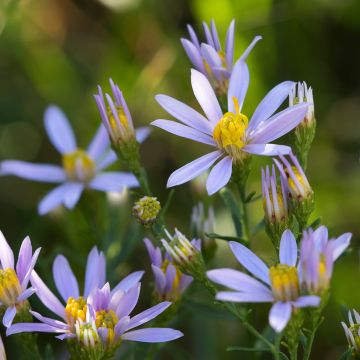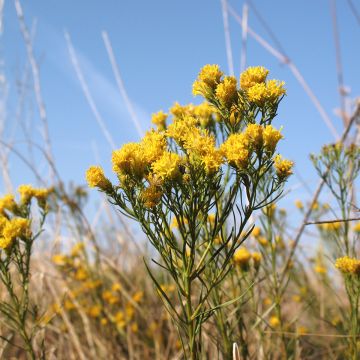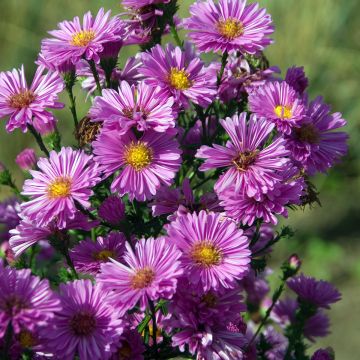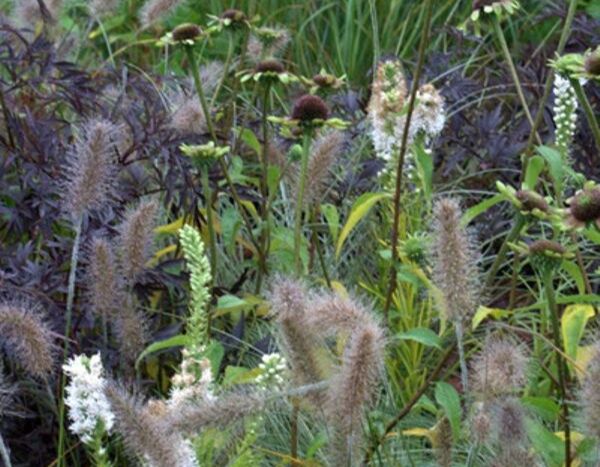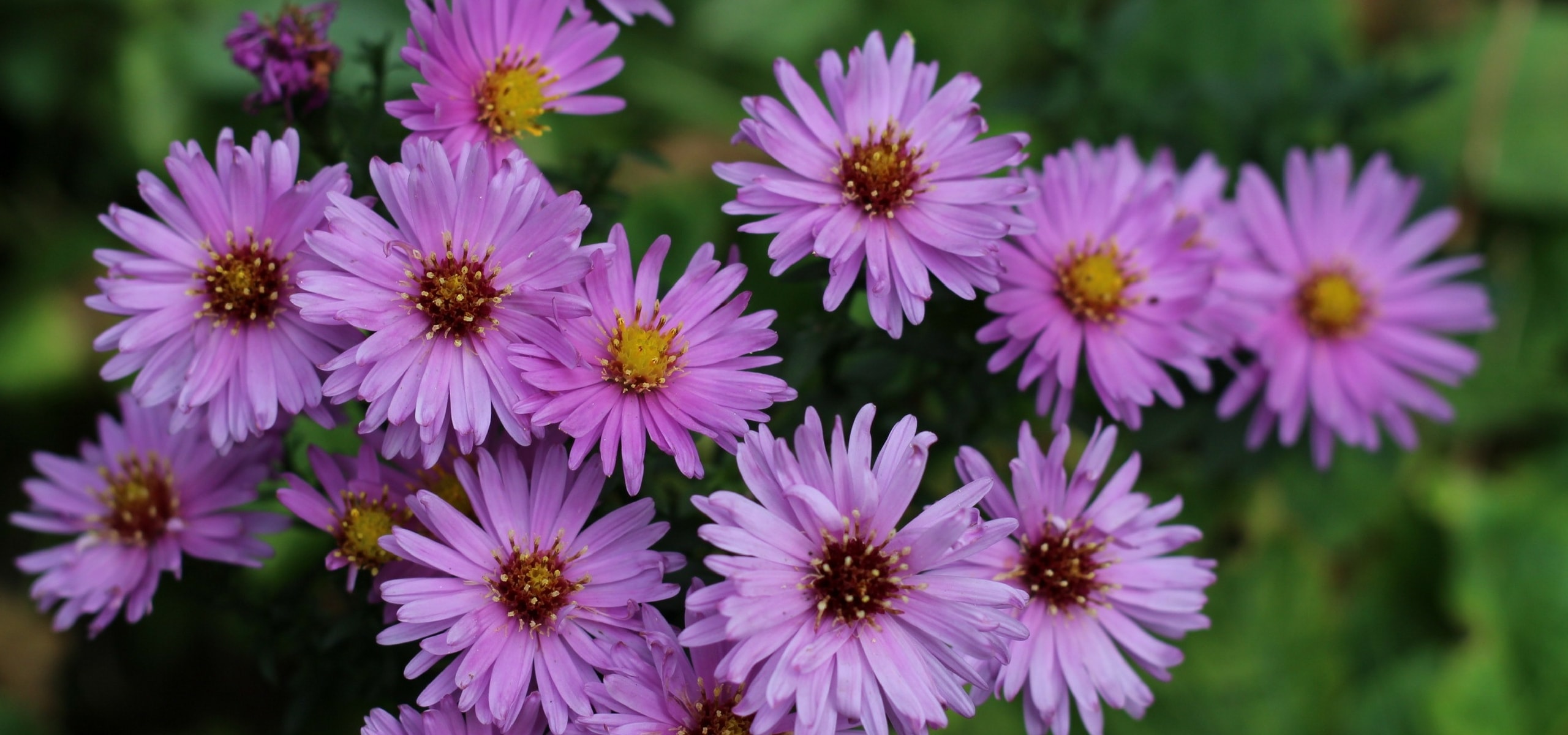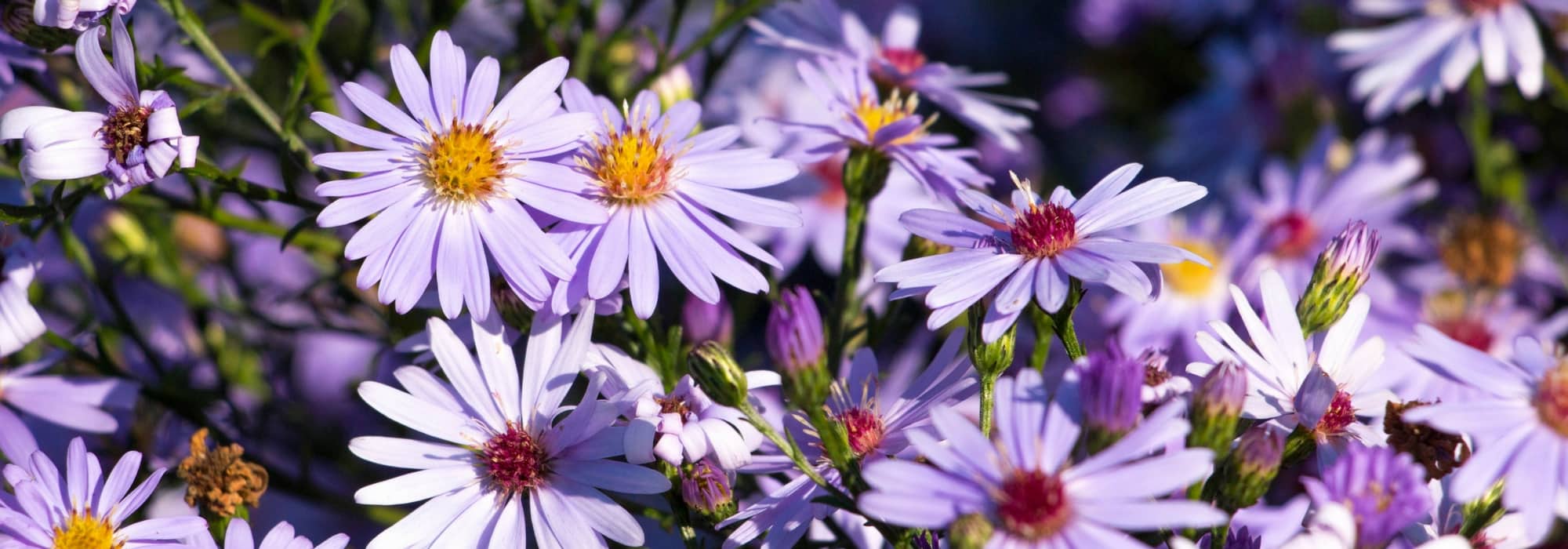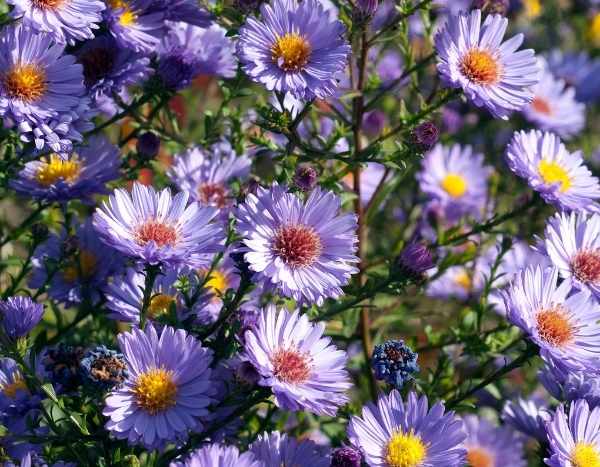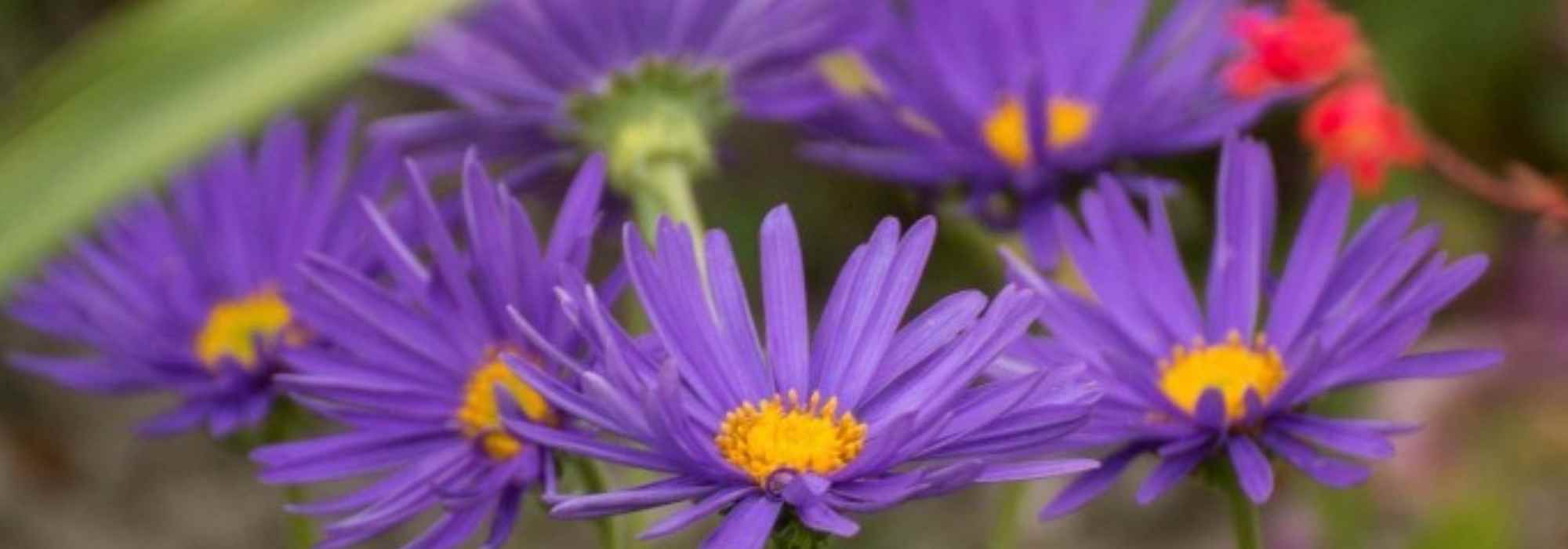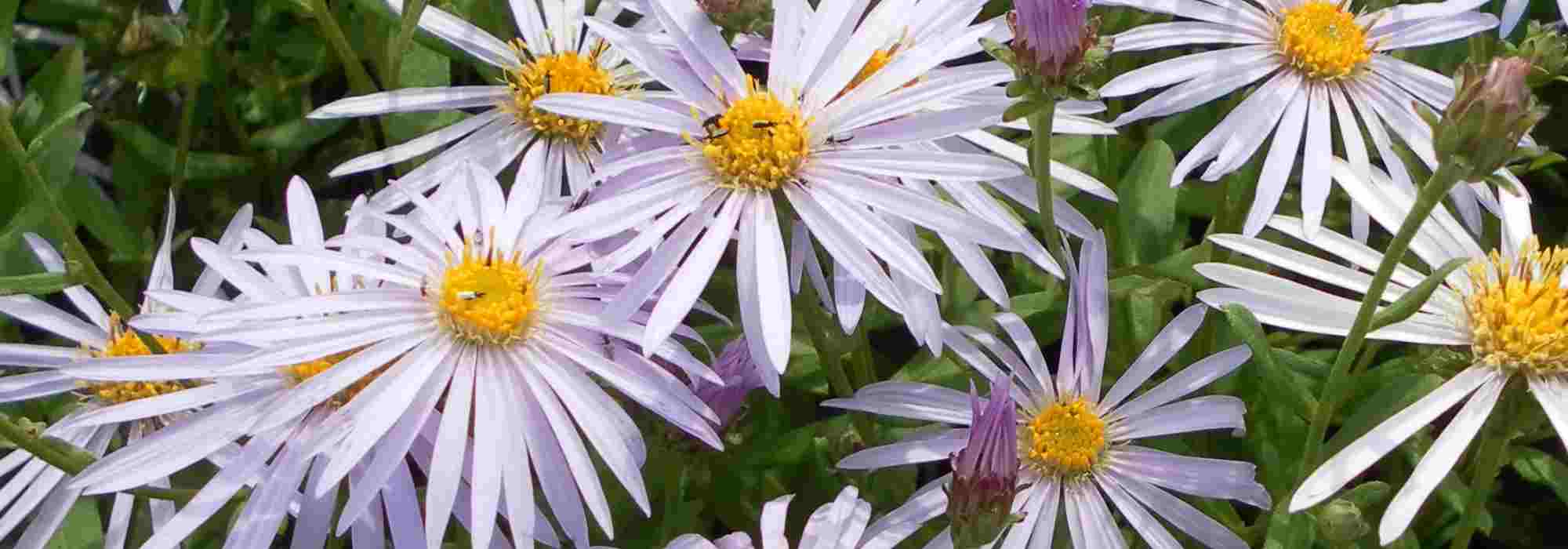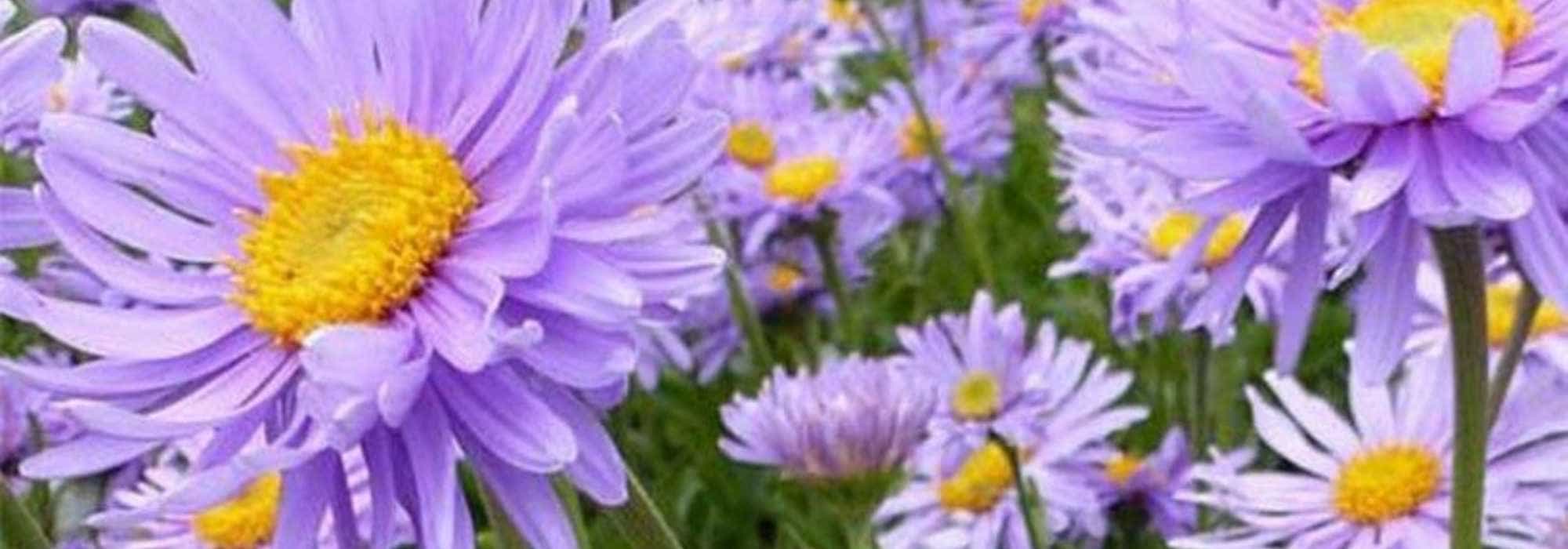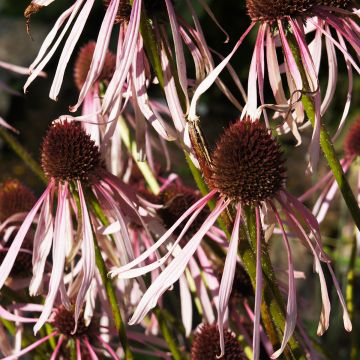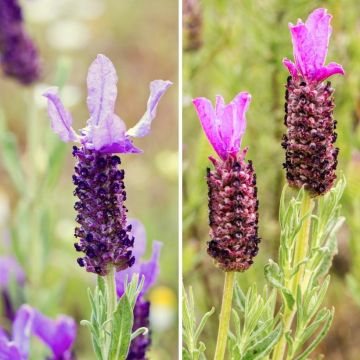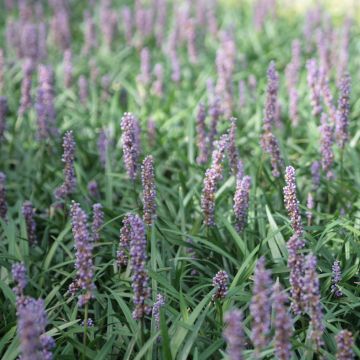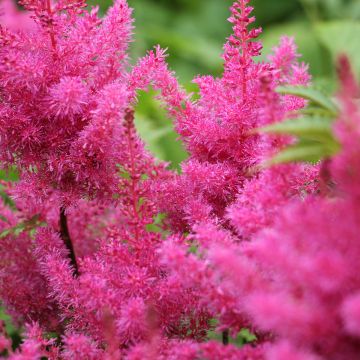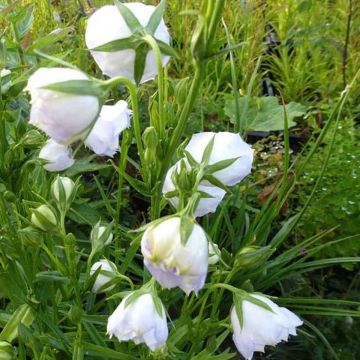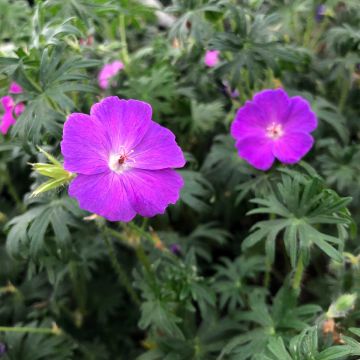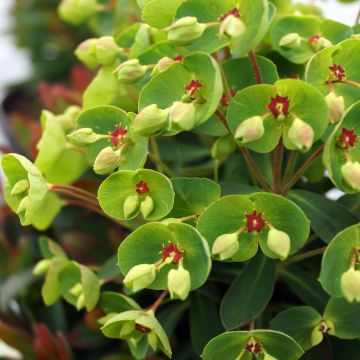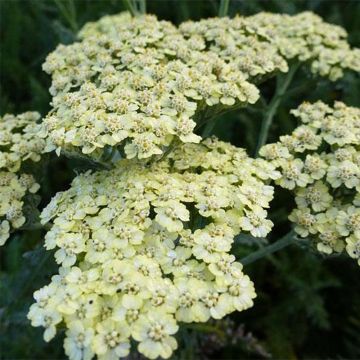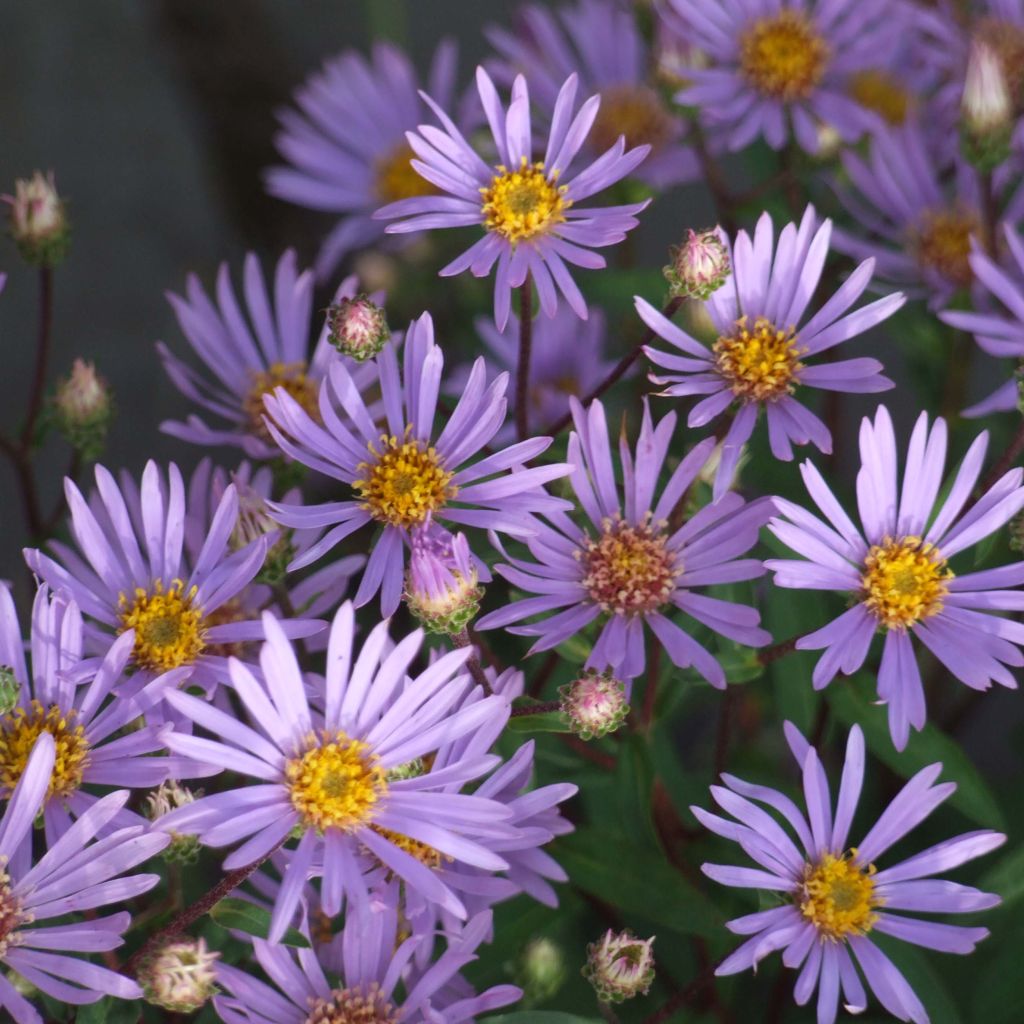

Aster radula
Aster radula
Aster radula
Rough Aster, Hairy Aster
Special offer!
Receive a €20 voucher for any order over €90 (excluding delivery costs, credit notes, and plastic-free options)!
1- Add your favorite plants to your cart.
2- Once you have reached €90, confirm your order (you can even choose the delivery date!).
3- As soon as your order is shipped, you will receive an email containing your voucher code, valid for 3 months (90 days).
Your voucher is unique and can only be used once, for any order with a minimum value of €20, excluding delivery costs.
Can be combined with other current offers, non-divisible and non-refundable.
Why not try an alternative variety in stock?
View all →This plant carries a 12 months recovery warranty
More information
We guarantee the quality of our plants for a full growing cycle, and will replace at our expense any plant that fails to recover under normal climatic and planting conditions.
Does this plant fit my garden?
Set up your Plantfit profile →
Description
Aster radula is a wild aster native to eastern Quebec, a species of the subarctic flora found as far as the Appalachian Mountains in North America, and therefore exceptionally hardy. While this plant is not spectacular, it blooms generously from the end of June, in the form of small blue or white heads with a golden yellow heart. Spreading through rhizomes, it forms light tufts adorned with disease-free hairy foliage. Easy to grow in the sun in ordinary or even poor soil, this is a plant for wild or mountain gardens.
Aster radula, also known as Eurybia radula, belongs to the Asteraceae family. In nature, it is found more often in wet places and on very acidic or even peaty soils. In cultivation, this species is very tolerant, accepting conditions that are quite different from its original habitat. This rhizomatous perennial has a flexible, bushy tuft-like habit, formed by leafy stems emerging from basal foliage. It will reach a height of 50-60 cm (20-24in) when flowering (sometimes 1.20m (4ft) if conditions are optimal), and spread over 50 cm (20in) fairly rapidly. The generous flowering takes place from the end of June until September, at the end of slender, brown, branched or unbranched stems. The inflorescence is a 2-3 cm (1in) diameter head, with peripheral, 'petals' that are bright blue, sometimes white. The central flowers (the heart) are bright yellow. The leaves are 5 to 8 cm (2 to 3in) long, oblong, pointed at their tips, medium green, hairy and clearly toothed on the edges. This plant self-sows spontaneously in light soil.
It is almost impossible to imagine our gardens without asters with their generosity and great adaptability. The species and varieties are so numerous that there is inevitably more than one suitable for each situation and climate. This one is particularly undemanding. It goes very well with Aster divaricatus, an equally hardy and accommodating relative, as well as with all other border plants such as Salvia microphylla, Salvia nemerosa, penstemons, dwarf gauras or Rudbeckia triloba. This mountainous Aster naturally finds a place in gardens located at high altitudes, in the sun, in the company of other enduring perennials such as larkspurs, valerians, bellflowers, autumn crocuses, or lupins.
Aster radula in pictures
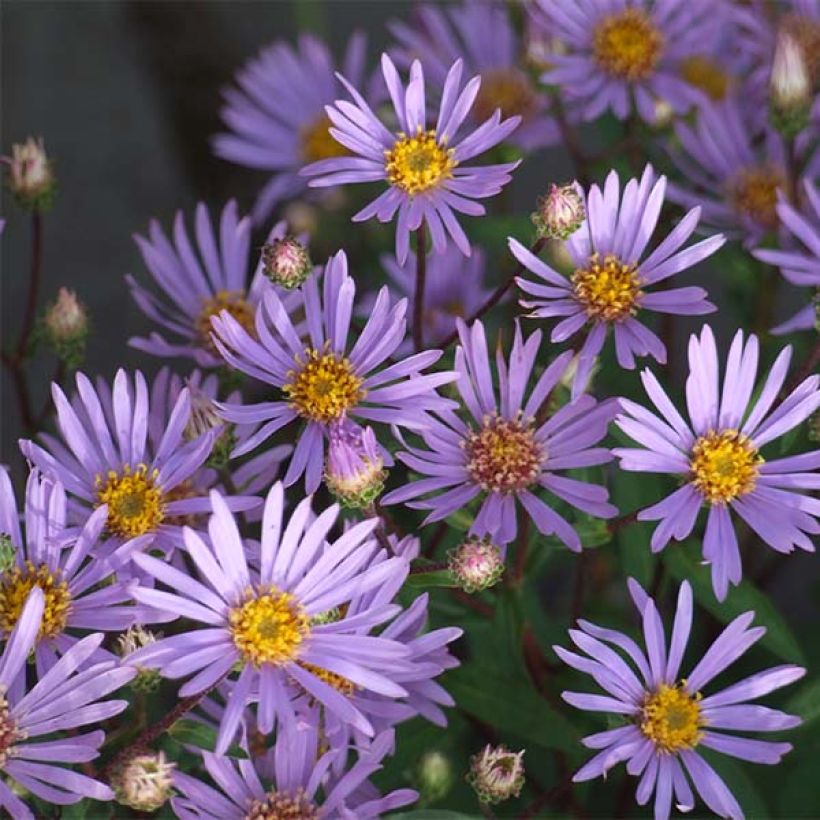

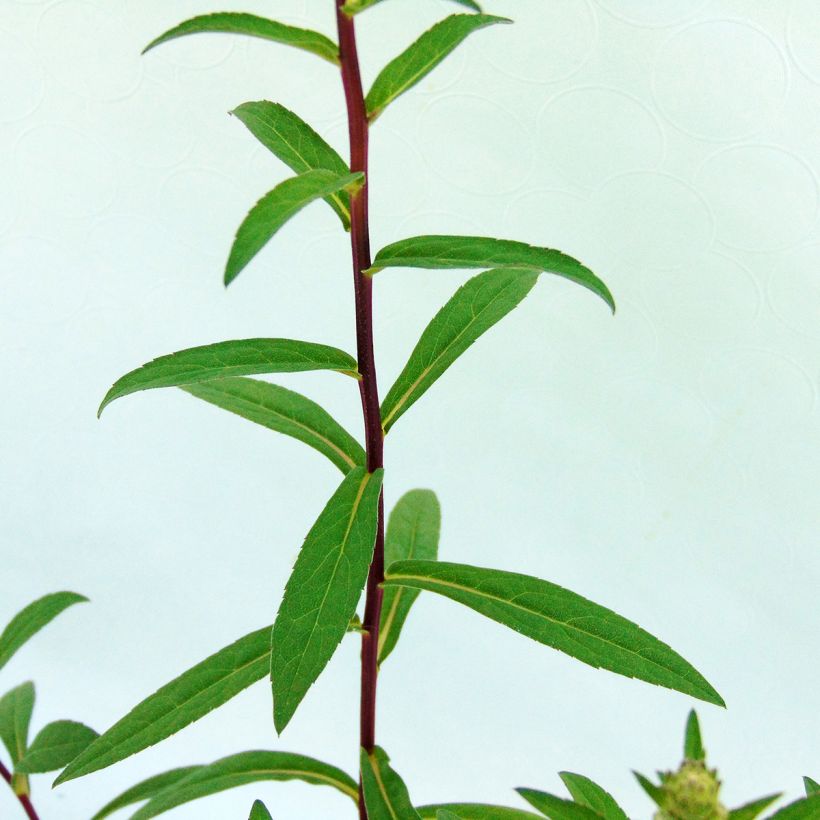

Flowering
Foliage
Plant habit
Botanical data
Aster
radula
Asteraceae
Rough Aster, Hairy Aster
Eurybia radula
North America
Other Asters
View all →Planting and care
Aster radula is a very accommodating plant, resistant to powdery mildew, a common disease in many Asters. Plant it in autumn or spring in ordinary soil, even peaty and acidic, moist to occasionally dry. It appreciates a sunny exposure. This aster, like many others, dislikes competition from the roots of trees and bushes. It will be necessary to avoid strong winds that could knock down the tall clumps. Once established, it should not be moved as it does not appreciate this. In mass planting, leave at least 50 cm (20in) between the plants. Divide the clumps every three years to keep them floriferous.
Planting period
Intended location
Care
Planting & care advice
This item has not been reviewed yet - be the first to leave a review about it.
Similar products
Haven't found what you were looking for?
Hardiness is the lowest winter temperature a plant can endure without suffering serious damage or even dying. However, hardiness is affected by location (a sheltered area, such as a patio), protection (winter cover) and soil type (hardiness is improved by well-drained soil).

Photo Sharing Terms & Conditions
In order to encourage gardeners to interact and share their experiences, Promesse de fleurs offers various media enabling content to be uploaded onto its Site - in particular via the ‘Photo sharing’ module.
The User agrees to refrain from:
- Posting any content that is illegal, prejudicial, insulting, racist, inciteful to hatred, revisionist, contrary to public decency, that infringes on privacy or on the privacy rights of third parties, in particular the publicity rights of persons and goods, intellectual property rights, or the right to privacy.
- Submitting content on behalf of a third party;
- Impersonate the identity of a third party and/or publish any personal information about a third party;
In general, the User undertakes to refrain from any unethical behaviour.
All Content (in particular text, comments, files, images, photos, videos, creative works, etc.), which may be subject to property or intellectual property rights, image or other private rights, shall remain the property of the User, subject to the limited rights granted by the terms of the licence granted by Promesse de fleurs as stated below. Users are at liberty to publish or not to publish such Content on the Site, notably via the ‘Photo Sharing’ facility, and accept that this Content shall be made public and freely accessible, notably on the Internet.
Users further acknowledge, undertake to have ,and guarantee that they hold all necessary rights and permissions to publish such material on the Site, in particular with regard to the legislation in force pertaining to any privacy, property, intellectual property, image, or contractual rights, or rights of any other nature. By publishing such Content on the Site, Users acknowledge accepting full liability as publishers of the Content within the meaning of the law, and grant Promesse de fleurs, free of charge, an inclusive, worldwide licence for the said Content for the entire duration of its publication, including all reproduction, representation, up/downloading, displaying, performing, transmission, and storage rights.
Users also grant permission for their name to be linked to the Content and accept that this link may not always be made available.
By engaging in posting material, Users consent to their Content becoming automatically accessible on the Internet, in particular on other sites and/or blogs and/or web pages of the Promesse de fleurs site, including in particular social pages and the Promesse de fleurs catalogue.
Users may secure the removal of entrusted content free of charge by issuing a simple request via our contact form.
The flowering period indicated on our website applies to countries and regions located in USDA zone 8 (France, the United Kingdom, Ireland, the Netherlands, etc.)
It will vary according to where you live:
- In zones 9 to 10 (Italy, Spain, Greece, etc.), flowering will occur about 2 to 4 weeks earlier.
- In zones 6 to 7 (Germany, Poland, Slovenia, and lower mountainous regions), flowering will be delayed by 2 to 3 weeks.
- In zone 5 (Central Europe, Scandinavia), blooming will be delayed by 3 to 5 weeks.
In temperate climates, pruning of spring-flowering shrubs (forsythia, spireas, etc.) should be done just after flowering.
Pruning of summer-flowering shrubs (Indian Lilac, Perovskia, etc.) can be done in winter or spring.
In cold regions as well as with frost-sensitive plants, avoid pruning too early when severe frosts may still occur.
The planting period indicated on our website applies to countries and regions located in USDA zone 8 (France, United Kingdom, Ireland, Netherlands).
It will vary according to where you live:
- In Mediterranean zones (Marseille, Madrid, Milan, etc.), autumn and winter are the best planting periods.
- In continental zones (Strasbourg, Munich, Vienna, etc.), delay planting by 2 to 3 weeks in spring and bring it forward by 2 to 4 weeks in autumn.
- In mountainous regions (the Alps, Pyrenees, Carpathians, etc.), it is best to plant in late spring (May-June) or late summer (August-September).
The harvesting period indicated on our website applies to countries and regions in USDA zone 8 (France, England, Ireland, the Netherlands).
In colder areas (Scandinavia, Poland, Austria...) fruit and vegetable harvests are likely to be delayed by 3-4 weeks.
In warmer areas (Italy, Spain, Greece, etc.), harvesting will probably take place earlier, depending on weather conditions.
The sowing periods indicated on our website apply to countries and regions within USDA Zone 8 (France, UK, Ireland, Netherlands).
In colder areas (Scandinavia, Poland, Austria...), delay any outdoor sowing by 3-4 weeks, or sow under glass.
In warmer climes (Italy, Spain, Greece, etc.), bring outdoor sowing forward by a few weeks.































